20. Exte: Hair Extensions (Sion Sono, 2007)
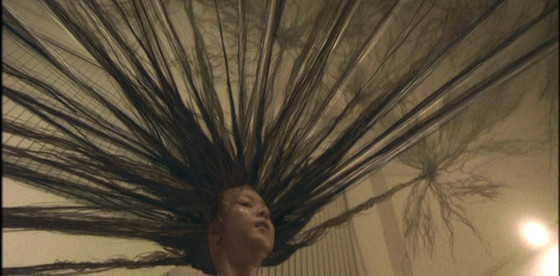
Yuko is a young hairdresser trainee who has been tortured for years by her irresponsible older sister, Kiyomi. In one utterly insensible act, the latter abandons her young daughter in Yuko’s care and leaves.
Having to work long hours, Yuko is obligated to leave the girl alone in her house. One day, Kiyomi, in a panic, leaves the house to search for her aunt, but instead she gets lost. Yamazaki, a half crazed night watcher, discovers the lost girl and brings her to the hairdresser’s, where he is deeply impressed with Yuko’s hair.
Sono uses one of his regular, utterly illogical ideas to present a social commentary of the contemporary Japanese tendency to submit to any trend. Apart from that, his greatest accomplishment is maintaining a level of seriousness, in a concept that could very easily become a farce.
“Exte” is quite a terrifying film, particularly in the more claustrophobic scenes. It has excellent performances by Chiaki Kuriyama, with her utterly terrifying facade, and Ren Ohsugi, who actually plays a horror clown with great success.
19. Kakurenbo (Shuhei Morita, 2005)
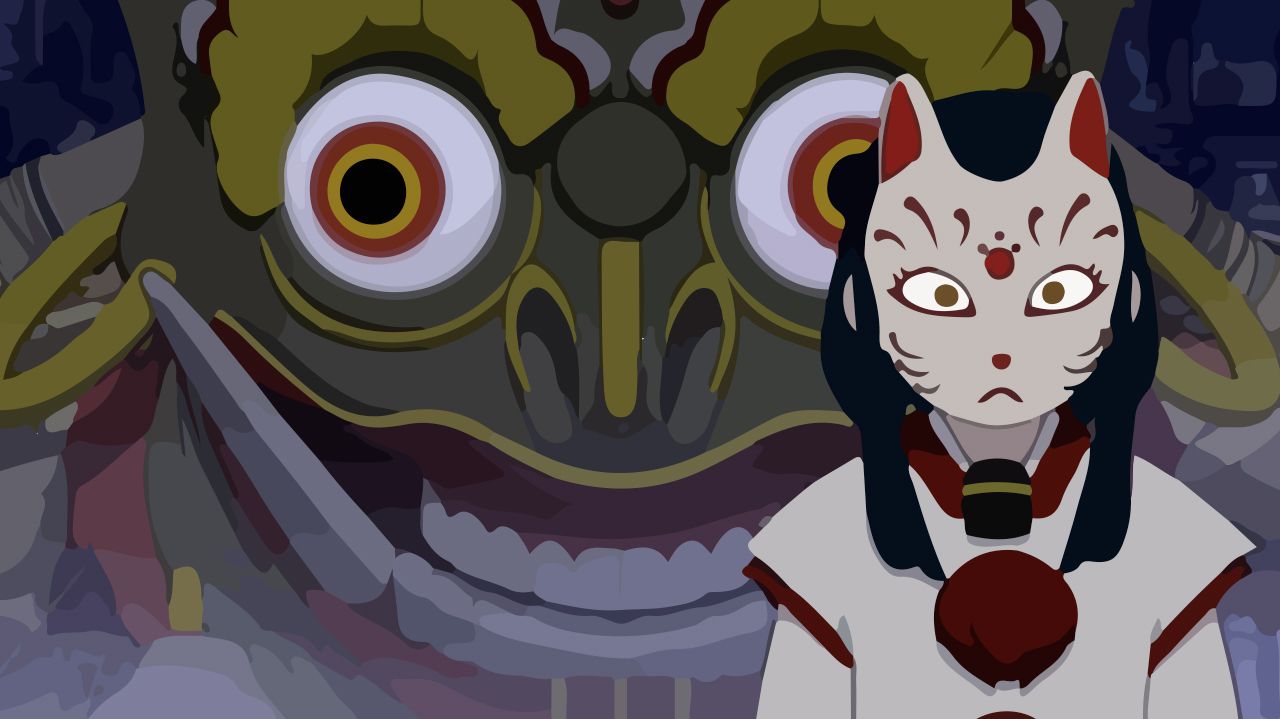
The story revolves around an urban legend that implies a dangerous game of hide and seek (kakurenbo in Japanese) is being played in a dark town, where demons also participate. Seven kids wearing fox masks decide to check it out.
This anime short may run less than 30 minutes, but it manages to build up a good amount of horror just by its atmosphere and build-up, without resorting to gore or abrupt sounds. This sense is heightened by the protagonists that look like Noh characters and by the elaborate use of music.
Furthermore, “Kakurenbo” is a unique visual spectacle, due to its unprecedented detail, great drawing, and astonishing animation.
18. Noroi: The Curse (Koji Shiraishi, 2005)
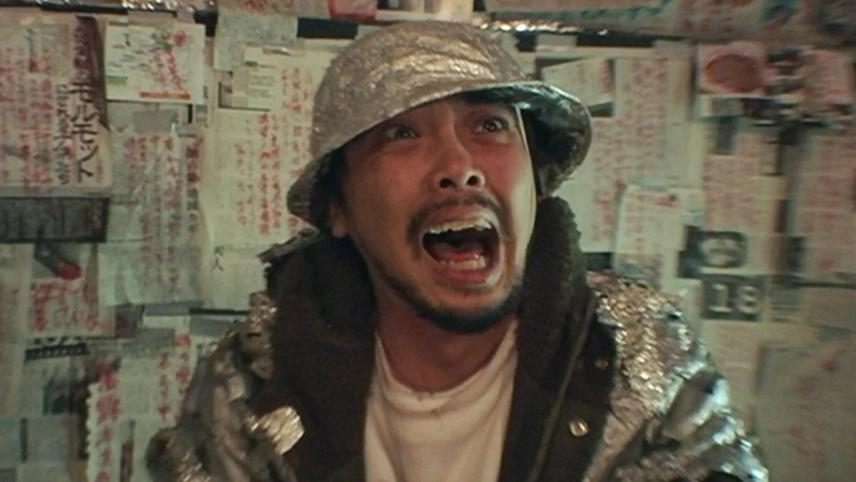
Quite a unique entry on the list, “Noroi” is shot in the form of a documentary, belonging to the horror subcategory named “found-footage”, and is unusually complex, since it includes more than 25 characters.
The film begins with an introduction to Masafumi Kobayashi, a paranormal investigator, and then proceeds to present footage of his research. The rest of the script follows Kobayashi as he researches the lives of several individuals who seem to be haunted by a supernatural force.
Shiraishi directs a film that seems as though it was shot with a first-person perspective, but it actually works as an actual video, since he presents it in the form of footage from a documentary. In this fashion, he avoids the limitations of first-person shooting, particularly with the change of perspective. Furthermore, he managed to make the audience feel like the actual investigator, as he combines the recorded material with other sources that help explain the case.
17. Over Your Dead Body (Takashi Miike, 2014)
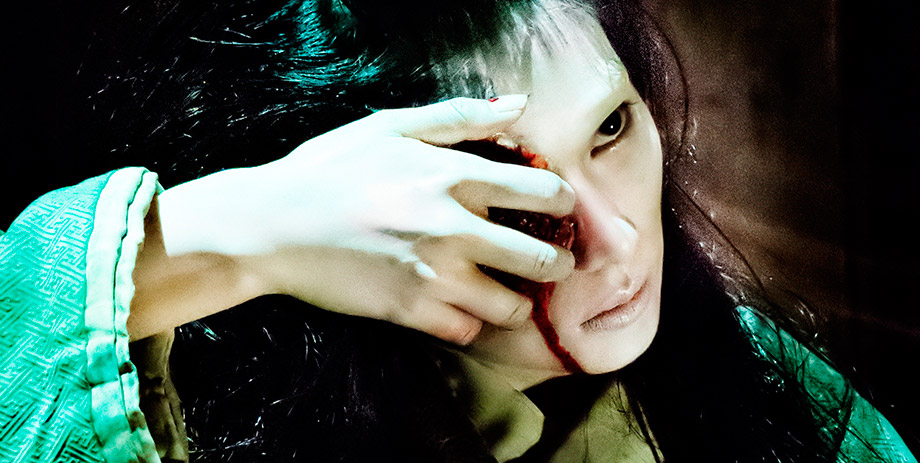
In one of the best latest films by the prolific filmmaker, a theatre troupe is rehearsing in a play where a samurai seduces a woman and then murders her disapproving father in order to inherit his estate. However, when he is offered the granddaughter of another wealthy man, his true colors are disclosed to his wife, who eventually returns as a ghost to haunt him.
The script follows the rehearsal as much as the lives of the actors outside the theatre, where Kosuke Hasegawa, the protagonist, drives his co-star and girlfriend, Miyuki Goto, to madness, due to his flirting with other actresses. Gradually their lives start mirroring that of the play.
The film is an adaptation of the Japanese horror tale “The Ghost Story of Yotsuya” (Yotsuya Kaidan), although Miike injected much of his own distinct style in it, as with the limp actress, and the constant crying of a baby, thus producing a film that is totally his own.
16. Cure (Kiyoshi Kurosawa, 1997)
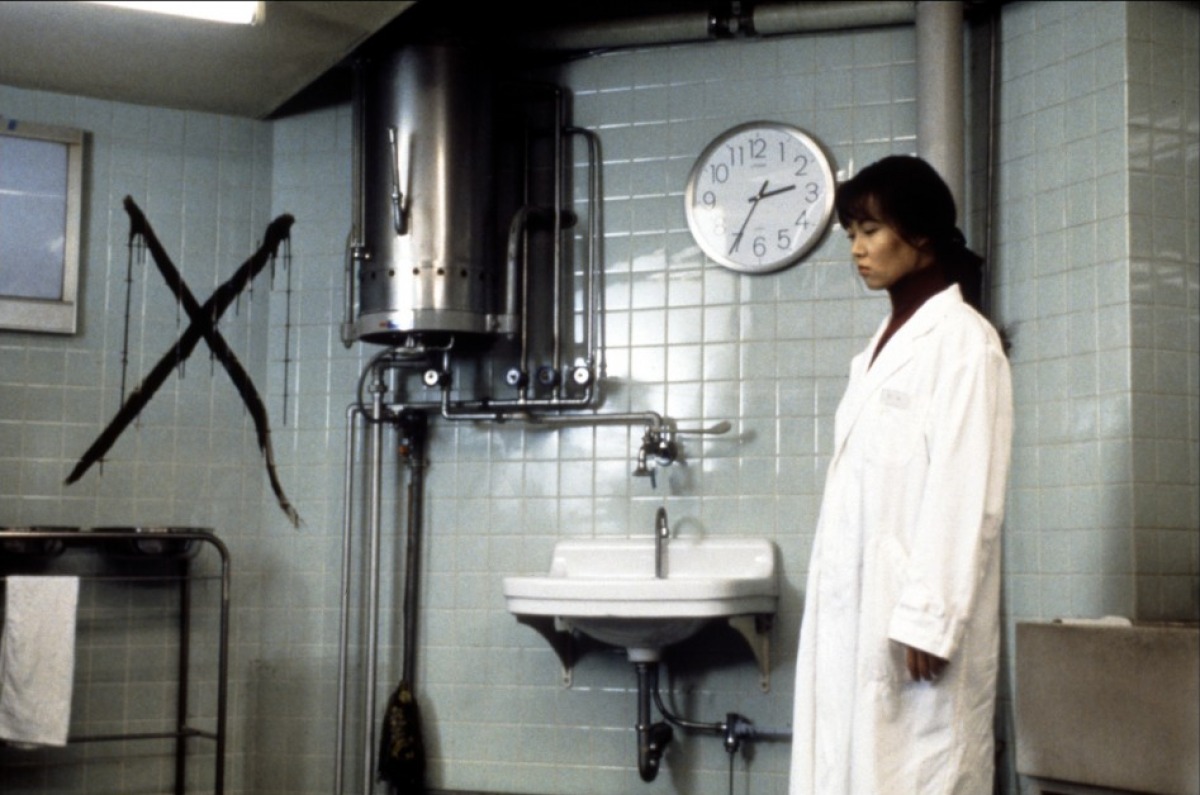
The film that established Kiyoshi Kurosawa as the master of slow horror deals with a surge of murders occurring in Tokyo. The common elements in the cases are an X carved with blood in the victim’s neck, and the fact that the murderer is found close to the victims, but does not remember a thing. Detective Takabe and psychologist Sakuma are trying to find out what happened, but their research reaches a dead end.
Instead of resorting to plot twists and reversals, Kurosawa gradually creates a maze that combines terror with confusion, in a tactic that exemplifies the ingenuity of both his direction and writing. This trait becomes quite evident in the final scene, which combines intelligent direction with cunning visuals. The fact that Kurosawa also makes a social remark through the extreme story gives the film additional depth.
15. Tsigoineruwaizen (Seijun Suzuki, 1980)
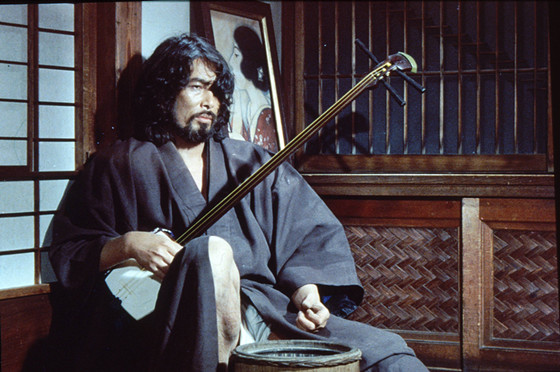
“Tsigoineruwaizen” is one of the most artistic entries on the list and along with “House”, the most surrealistic one.
Aochi, a German professor, meets his former colleague Nakasago in a secluded seaside village. While having dinner, the two of them meet a beautiful geisha named Koine.
Six months later, Aochi learns that Nakasago is married and that his wife, named Sono, looks just like Koine. After awhile, Nakasago embarks on another road trip, this time with Koine, leaving the pregnant Sono behind.
Seijun Suzuki strayed away from his usual Yakuza theme, and by implementing a naturalistic but also twisted and freakish visage, he managed to create a psychedelic masterpiece, with an unusual combination of horror and preposterousness.
The film benefits the most from the great set design, the lighting, and the grandiose performance of the actors, which fits perfectly the hyperbolic aesthetics of the film.
14. Kwaidan (Masaki Kobayashi, 1964)

Masaki Kobayashi is one of the most important Japanese post-war filmmakers, with his prowess becoming quite visible in this film, which was nominated for an Oscar and won the Jury Special Award at the Cannes Film Festival.
“Kwaidan” features four horror stories, based on the homonymous book by Yakumo Koizumi. All of the segments deal with the relationships of everyday people with the supernatural world, particularly ghosts, and all include a plot twist at the end.
The collection stands apart due to its wonderful aesthetics, which include lots of sentiment and a dream-like essence, similar to the one Kurosawa implemented in “Dreams”. Furthermore, Kobayashi deals with interracial relationships, justice, and time, along with the horror produced from the supernatural.
13. Dark Water (Hideo Nakata, 2002)
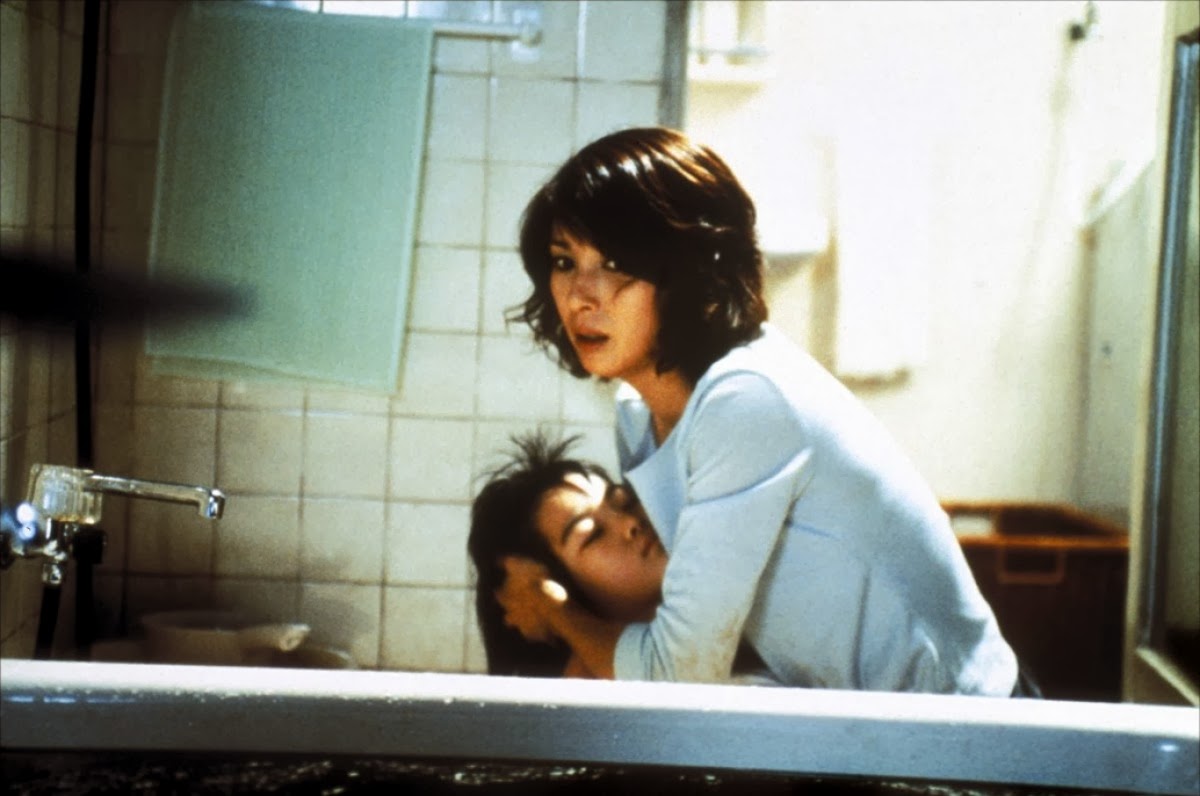
Yoshimi is a divorced mother who is seeking sole custody of her young daughter, Ikuko. While searching for an apartment, she chooses one that is run-down and cheap. She enrolls Ikuko in a nearby kindergarten and she gets a job as a proofreader. Eventually, she realizes that the flat hides way more than the moisture in the walls.
This film repeats the already successful formula used in “The Ring”, with director Hideo Nakata adapting another work by Koji Suzuki. Nakata directs an atmospheric film, though the factor that separates it from “The Ring” is that technophobia is substituted with hydrophobia. As previously stated, he didn’t find a good reason to alter an already successful recipe, so “Dark Water” is very similar to “The Ring”, which is not a bad thing.
“Dark Water” won awards at festivals all over the world, including the Jury’s Choice Award at the 2009 Puchon International Fantastic Film Festival. An American remake with the same name was released in 2005.
12. Ju On: The Grudge (Takashi Shimizu, 2002)
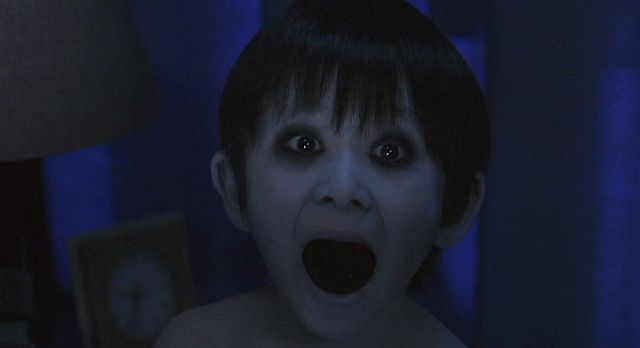
According to a myth, when someone dies while in a state of extreme anger, a curse is born, which revives the individuals involved as ghosts within the place where the incident occurred. In this particular film, a husband kills his spouse and possibly his son after discovering that she had an affair with another man. When the Tokunaga family moves to the house where the murder happened, the curse manifests itself with terrifying results.
Takashi Shimizu, who was also the scriptwriter, puts the events in non-chronological order, trying to combine the terror with some deeper thought. He manages to direct a truly horrifying movie, whose most distinguishing feature is that the most suspenseful and terrifying scenes occur in the light of the day.
The Japanese film received limited release in the US in 2004 and an American reboot of the series was announced in 2014. A huge franchise, “Ju On” also spawned novels, comics, and a video game.
11. Kuroneko (Kaneto Shindo, 1968)
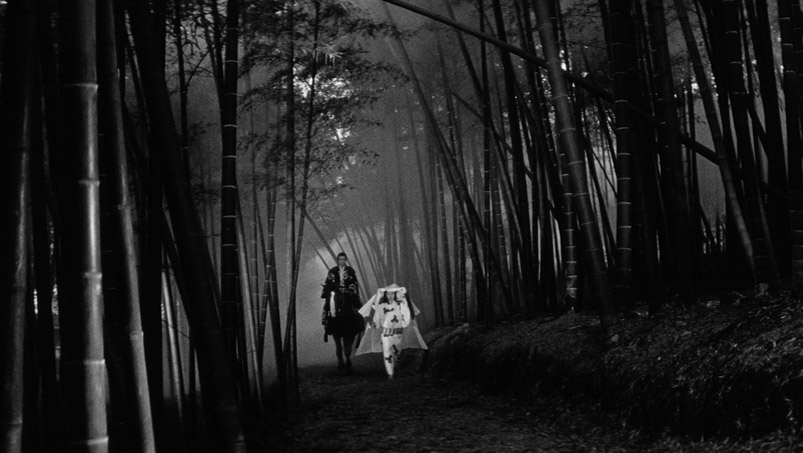
“Kuroneko” is often compared to “Onibaba”, due to the setting of a mother and a daughter-in-law waiting for the son of the house, and the main theme of revenge.
During a civil war in Japan’s Heian period, a woman and her daughter are raped and murdered by soldiers. After the end of the war, samurai are continuously found decapitated near the place the women used to live. The governor sends a newly appointed samurai to discover the murderer, who seems to be a ghost. The samurai will meet with the two women along with an almighty demon.
“Kuroneko” is considered one of the masterpieces of J-horror, particularly due to its astonishing black-and-white cinematography and the splendidly choreographed aerial battles of the characters. Furthermore, Kaneto Shindo adapted the vampiric myth into Japanese tradition, which was already filled with stories about demons, ghosts, and spirits, and along with notions of extreme eroticism, it produced a truly unique film.